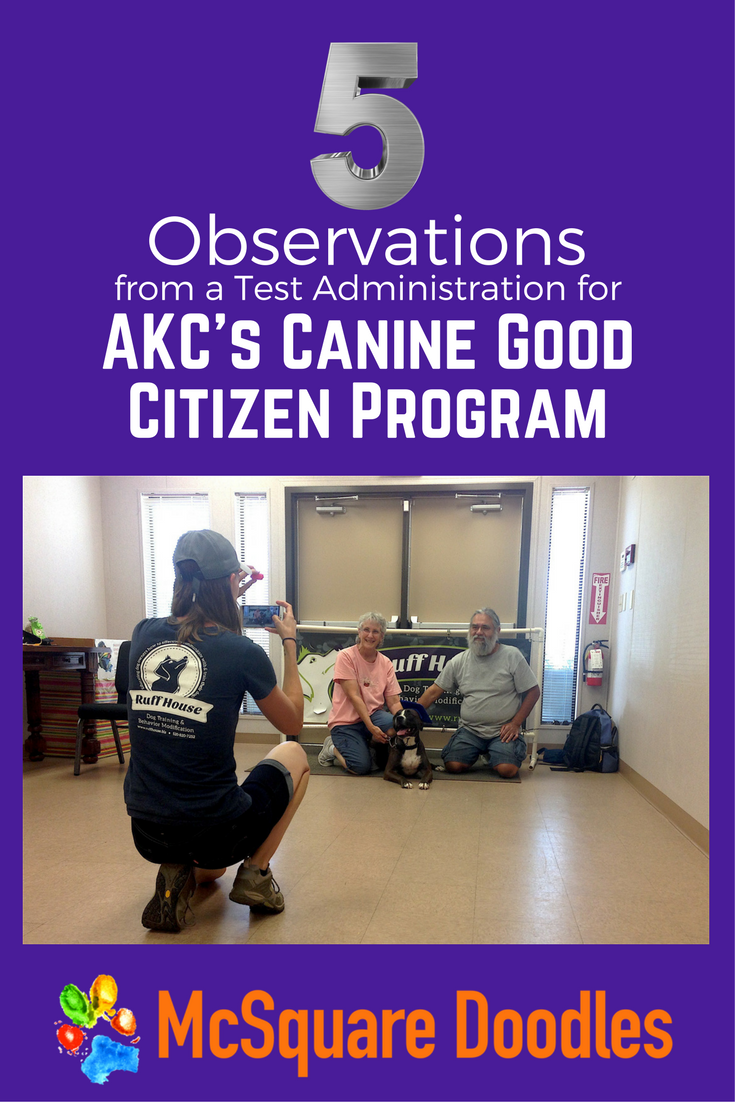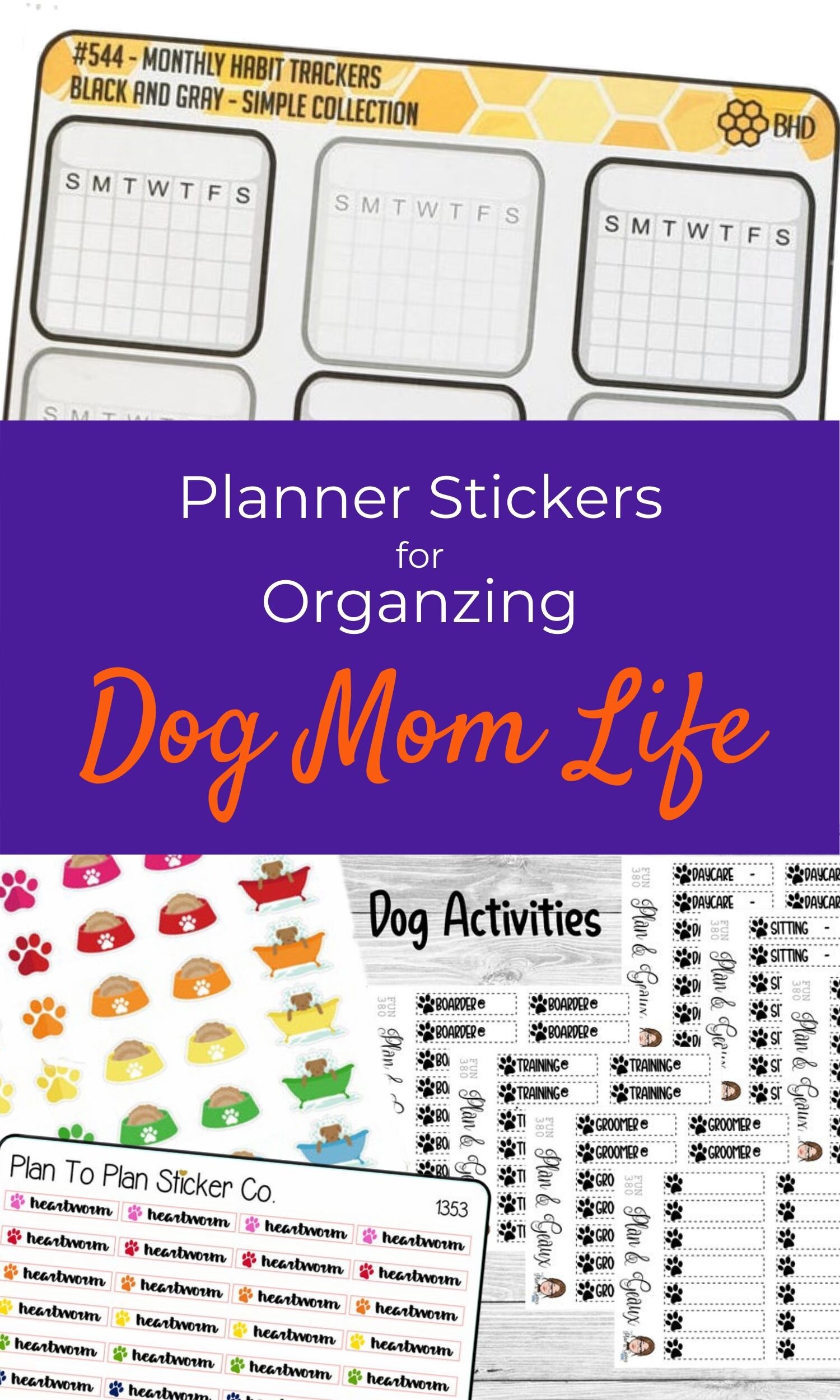Five Observations from a Test Administration for AKC's Canine Good Citizen Program
/Since last fall, Crystal Blaker from Ruff House Dog Training & Behavior Modification has been our favorite resource for helping us figure out how to manage various behaviors and scenarios with Bernie. A few weeks ago, Crystal invited me to observe four dogs taking the AKC's Canine Good Citizen Test.
Duncan proudly smiles in his graduation cap with his peoples after earning the title Canine Good Citizen through Ruff House's 6-week Canine Good Citizen Course.
While just two of the four pups passed the exam, I could tell that all of the human-pup teams had put in hours of work toward mastering the ten different tasks required for CGC.
What are the CGC test requirements?
The dog will allow a friendly stranger to approach it and speak to the handler in a natural, everyday situation.
The dog will allow a friendly stranger to pet it while it is out with its handler.
The dog will permit someone to check its ears and front feet, as a groomer or veterinarian would do.
Following the evaluator's instructions, the dog will walk on a loose lead with the handler.
The dog and handler walk around and pass close to several people to demonstrate that the dog can move about politely in pedestrian traffic and is under control in public places.
The dog must do sit and down on command. Then the owner chooses the position for leaving the dog in a stay.
The dog will come when called by the handler from 10 feet on a leash.
Two handlers and their dogs approach each other from a distance of about 20 feet, stop, shake hands, and exchange pleasantries to demonstrate that the dog can behave politely around other dogs.
The evaluator will select and present two distractions for the dog to ignore.
The dog will be left with a trusted person while the handler is gone for three minutes to demonstrate that the dog will maintain good manners and training.
Need help with training for Canine Good Citizen? Read all of our helpful posts about CGC covering training ideas, tips, and inspiration.
My five takeaways:
1. Dogs need to meet lots of different kinds of people in various environments.
I think just about every person commented on how their dog was already familiar with the environment they were walking into, but the dogs were expecting to see other dogs from class. When teams first entered the room, it did seem like the dogs were looking around and scanning the room.
The two dogs who did not pass each had difficulty with the friendly stranger in the room they were already familiar with.
One dog barked and lunged at the friendly stranger who jogged by. The other dog growled as the friendly stranger approached for the first time. Both dogs were just scared. And their reactions surprised their handlers.
While I may not be able to anticipate everything that will frighten my pups, I can certainly get them out meeting as many people as possible in as many different scenarios as possible to mitigate their fear.
2. Confidence levels makes a difference.
The handler of one of the dogs who passed seemed a little nervous when they first started the test. When the friendly stranger asked to pet and brush her dog, the handler's response both times was "You can try."
In my head I was thinking "Oh! Don't be self-deprecating here."
As the friendly stranger approached the dog and handler, the dog did seem like he knew he was being evaluated. When the stranger pet him, he had a hard time keeping still. He was a happy guy, but nervous. Like he knew the words his handler had just spoken.
Once that section of the test was over, though, the handler and her dog worked really well together. Her confidence was bolstered with each task and her dog's confidence grew as well. When she left her dog with the friendly stranger and walked into the next room out of sight, the dog did just fine.
Since this dog passed all of the other portions of the test beautifully, Crystal had the friendly stranger approach the dog one more time and ask to pet him. This time, the handler seemed much more relaxed, replied, "Yes" and the the dog accepted the pet much more gracefully.
Project confidence.
3. Some people place their hand really close to their dog's face.
Every handler used hand signals with their dog, but I was surprised at how close some people's hands got to their dog's face. Sure, the strongest sense for a dog is smell, but none of these dogs are blind. They could all see just fine as far as I could tell.
When I thought about it, I guessed that by putting your hand right in front of your dog's face, you do force the dog to see the hand signal. It's hard to ignore something that's directly in front of you. There are times when I'm trying to get Bernie's attention and it feels like a losing battle. The next time he's mentally wandering, I may try to place my hand closer to his face to see if my results are different. I just don't want to get too in his face because who wants a hand right in front of your face?
Fiona and her handler take a graduation walk around the room to celebrate her new title of Canine Good Citizen.
4. I have a much clearer picture of what each task looks like.
I've read the descriptions of the ten test tasks. I've even got the official AKC training publication: Citizen Canine: Ten Essential Skills Every Well-Mannered Dog Should Know.
But watching four different dogs attempt all ten tasks gave me a much better idea of what Bernie can do right now and what I clearly need to work on.
Meeting a stranger calmly? Bernie needs to find his inner Zen Doodle. Same with letting someone pet him. He's getting better at keeping "four on the floor" but sometimes he just gets so excited.
On the positive side, after watching these four dogs. I know Bernie will rock the distractions and loose-leash walking. He's got those tasks down.
5. Figure out your weaknesses. Then practice! Practice! Practice!
Every handler mentioned in some way how much work they put into Canine Good Citizen.
For the two handlers whose dogs did not pass the test, I could tell they were disappointed. But both dogs did pass eight of the ten test tasks. Eight! That's an impressive number.
Crystal encouraged them to hone in on those tasks that their dogs struggled with. She holds a park class every Saturday morning where people can drop in for $25. That's the perfect environment for practicing CGC skills with someone who can observe the dog and help direct the handler in training their dog.
But the bottom line is that repetition and reinforcement are important. If I want Bernie and Lizzie to become Canine Good Citizens, then I have to work with them every day. Even if the work is just a little here and a little there. Every day!
Other Canine Good Citizen posts:































